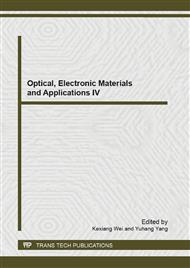p.447
p.454
p.459
p.463
p.467
p.472
p.478
p.482
p.486
A Flame Fringe Detection Algorithm Based on Mahalanobis Distance
Abstract:
In this paper, a mahalanobis distance based flame fringe detection algorithm through digital image processing was proposed according to the insufficient accuracy and excessive interference of the traditional flame fringe detection algorithm. The similarity between the pixels in GRB image and the sample flame pixels was first calculated through Euclidean distance and mahalanobis distance for classifying the pixels in the image and finishing flame segmentation, and then the image was processed through binarization, and finally flame fringe was extracted through gradient method and image morphology. Also, a simulation analysis was made, and the results showed that the fringe extracted with this algorithm was single-pixel, smooth and continuous without cross, had less interference, and possessed high accuracy and reliability. Thus, this method can meet the flame detection in the complex images such as fire disaster image.
Info:
Periodical:
Pages:
467-471
Citation:
Online since:
July 2013
Authors:
Keywords:
Price:
Сopyright:
© 2013 Trans Tech Publications Ltd. All Rights Reserved
Share:
Citation:


